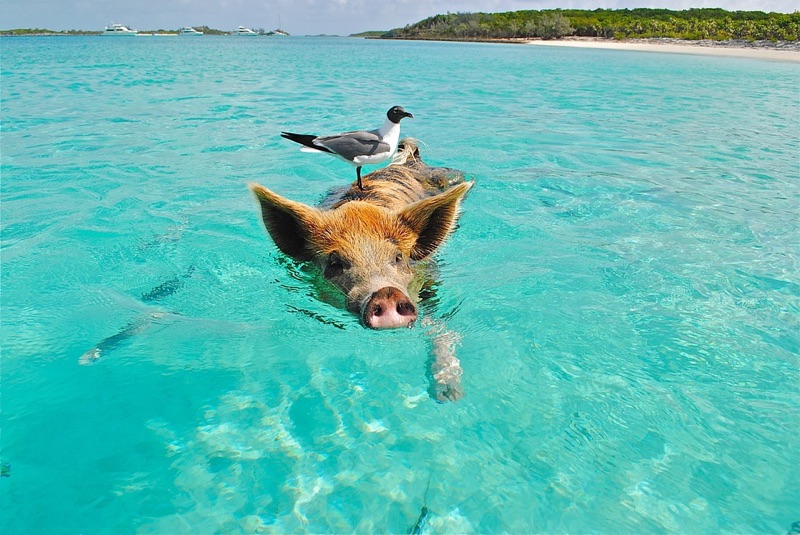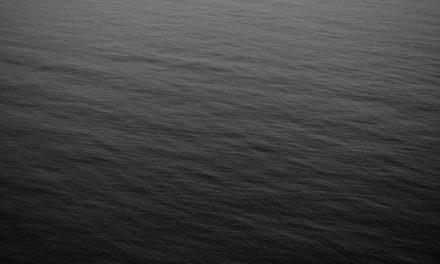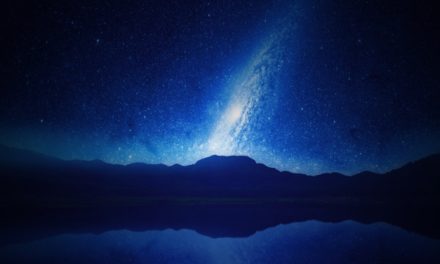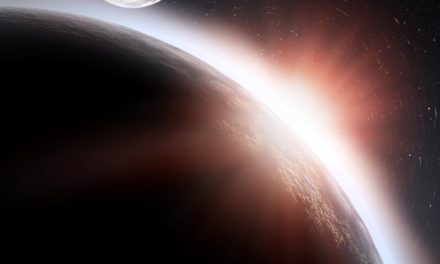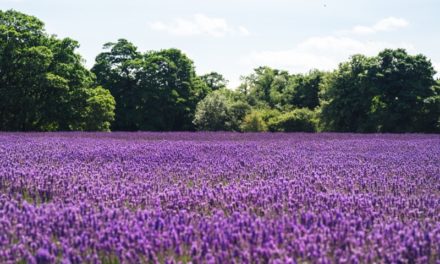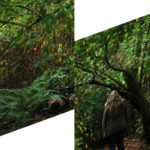And God said, Let the waters bring forth abundantly the moving creature that hath life, and fowl that may fly above the earth in the open firmament of heaven. Gen 1:20
We are looking at Creation as a parable of Redemption, to see how God designs us to be restored into His image. That restoration requires choices on our part. Those choices will determine our destiny. Either we advance heavenward, from grace to grace, or we fall earthward to eternal darkness and emptiness (as described in Genesis 1:2). The steps we take heavenward, as the Creation story progresses, are:
- First we become aware of God’s presence, His empowerment and enlightenment (LIGHT).
- Next we are led to find benefit in benevolence, serving others. Even though our hearts may not be pure yet it is a step toward Godlikeness (FIRMAMENT).
- Then we are brought into fellowship with others of like mind. As we socialize and work with them our own imperfections are brought to light. As we confess and forsake our faults our hearts are prepared for God to plant His Seed of Righteousness in our heart (SEAS & LAND). Fruitfulness begins—the first visible sign of partnership with God (VEGETATION).
- At this point we are encouraged to share our experiences with others outside our circle of friends. This glorifies God and encourages others to turn to Him (HEAVENLY BODIES).
As we noted at the end of the last chapter, this witnessing can be done even though hearts are not fully converted. Days 5 and 6 continue to address the conversion factor. To begin this part of the study we will consider Paul’s discussion about marked differences in God’s creation, in the physical and spiritual realms, referring to what was created on days 5 and 6.
1Cor 15:39 All flesh is not the same flesh: but there is one kind of flesh of men, another flesh of beasts, another of fishes, and another of birds.
Note that all four types are vertebrates. We consider the vertebrate creation during this phase of Creation to represent spiritual growth of the Christian for they only have “backbones”. The backbone or spine has always been used to illustrate character, whether it be strong or weak—even outside of Christian circles1. And our focus in these studies is to understand growth into Christ’s likeness, the formatting of His attributes into our thoughts and feelings and actions—our character.
The next two days of Creation, Days 5 and 6, enlarge on the maturing from sinner to saint and what it takes to grow into the fullness of Christ’s image. The four types of vertebrates symbolize the development of the spiritual life from fetus (before “birth”), to babyhood (when we just begin to eat the simplest of Gospel foods), and finally into adulthood (when we are experienced in making responsible decisions on our own).
Heb 5:13-14 MSG Milk is for beginners, inexperienced in God’s ways; solid food is for the mature, who have some practice in telling right from wrong.
This period of Creation Week gives insight to what the Father and Son designed to follow Christ’s brief time on Earth (as depicted in Days 1-4)— His lessons of practical service would be repeated by His followers, but in greater power than when Jesus was among them. During this time the Saviour set forth the object of His mission, and laid the foundation of the work that was to be taken up by His disciples. And although many generations would pass away, His lessons of practical service would be duplicated through His witnesses… as their characters become perfected.
THE FIFTH DAY OF CREATION
As the three types of muscles2 make movement possible within the body so do the three great motive powers of the soul3 make it possible for the spirit of man to express itself. The word Paul used for “flesh” refers to the “meat” (stripped of the skin), which is basically the skeletal muscles. This is the muscle group that best illustrates FAITH, because both require voluntary action.
As we put these ideas together we see an interesting possibility, that character development can be expressed as a growth in faith, and that that growth can be illustrated by the four types of flesh discussed in days five and six of Creation Week. Because the first two are discussed in Day 5 of Creation, we will consider them in this chapter.
FISH FAITH
When Jesus told His disciples that He would make them “fishers of men” (Matt. 4:19), He used fish to represent those without a saving knowledge of Christ—the unconverted. Because their knowledge of God is either nonexistent or very primitive, it is difficult for them to “choose” to respond to God’s love. So Jesus talks about these people being “caught” by hook or net and brought into the church (Mat 13:47-9). Note in this reference being “caught” in the net didn’t necessarily result in the saving of all fish. Some in the end are still cast away as “bad”. But evangelism gives the unsaved a chance.
Since all are given a measure of faith (Romans 12:3) this includes even the unconverted. Theirs is a BLIND faith—a faith in which the habits of life are changed without an intelligent faith in Jesus, a faith that leads one to worship he knows not what (Acts 17:23), but he worships that which leads him to respect his own manhood. As he takes steps toward the light, increased light will shine upon him to see the sinfulness of sin and the love that God has for him. This is the faith the unconverted can have.4
Fish enjoy a great freedom of movement in the waters, as do their counterpart in the air (birds). But this freedom does not contribute to the building up of God’s kingdom. That is built on land (a Rock). Though the step is a primitive one it is in the right direction.
BIRD FAITH
Man has always been intrigued with birds, their multiple abilities in flight, their captivating songs, their social networking, and many other attributes absent in much of the rest of creation. But perhaps the greatest fascination with these winged creatures is their freedom to move about as they choose—whether on land, in the air, or (with some) even in the water. Fish also have ability to move about freely, but in an environment unnatural to humans. Imagine being able to soar, seemingly, for hours on invisible currents, or burst into the air in a split second to escape danger, or dive earthward at breath-taking speeds.
Ducks list among the world’s fastest flyers, the speediest being the Canvasback duck at 72 mph. Yet this rates only as 6th fastest. The fastest bird on record for horizontal flight is not the hummingbird (clocked at up to only 60 mph), but rather the Spine-tailed swift, clocked at 106 mph. The Peregrine Falcon claims the speed record for any creature on earth when in its hunting dive, the stoop, it soars to a great height, then dives steeply at speeds of over 200 mph—all the time in full control.
Freedom to move about as we choose is a special characteristic God has given for the growth of faith (for the unconverted as well as converted). It is characteristic of God’s kingdom and provides for development of character. God could have created man without the power to violate God’s law, but then man would not be a mere automaton or robot, not a free moral agent. Without freedom of choice obedience would not have been voluntary, but forced, and there would be no development of character.5 We can see the importance of this freedom in at least two areas of human growth: infancy and early love.
INFANCY
The first few years is when the foundation of the child is laid. It is during this time small children should be left as free as lambs to play and run outside, and to be free and happy. This is not to encourage indulgence, however. Even in this freedom the mind and purpose are to be sustained by firm, undeviating, sanctified principles. Consistency and affection are to be enforced by a lovely and consistent example.6
As we grow into Christ’s likeness and become more comfortable with Him and His choices for us, we voluntarily choose His way in place of our own. This is called “conversion” and is represented by the bird (or dove, as at Christ’s baptism—see below).
FIRST LOVE
The choices we make from our head (logic) are not as lasting or powerful as those we also make from our heart (feelings and emotions). Marriage is often used to illustrate such deep choices. Courtship and early marriage is illustrative of first love, where the heart and head are still engaged in the relationship. The Bible honors this period and allows the young couple freedom and time to enjoy their new life together and to establish their new home.
Deu 24:5 When a man hath taken a new wife, he shall not go out to war, neither shall he be charged with any business: but he shall be free at home one year, and shall cheer up his wife which he hath taken.
First love faith characterizes one who has gotten sight of the fundamental concepts of the Gospel and is overwhelmed with his new-found privileges and freedoms in Christ. He drinks copiously from the Fountain of Life and is filled with the New Wine of the kingdom. He cannot seem to get enough of his new Friend and proudly shares Him with all. This is the faith of the newly converted, and it attracts the attention of many to Christ, the object of their love. This experience is symbolized by a pure white dove.
Mat 3:16 And Jesus, when he was baptized, went up straightway out of the water: and, lo, the heavens were opened unto him, and he saw the Spirit of God descending like a dove, and lighting upon him
Jesus’ baptism was highly emblematic of the Christian’s early steps. His total immersion into the muddy Jordan can be compared to His complete identification with the creatures of the waters, the unconverted. Then His being lifted out of the waters by His baptizer, John, is like the fisherman “catching” his fish and bringing it out of the water. Fish, of course (the unconverted) cannot live long in the fresh air of heaven, so they die. But then we see the Dove bringing new life and blessing. The sinner has become a new creation, a saint, and is entrusted with new life and powers (represented by the second level of vertebrates created, the birds).
However, if the heart cools (feelings and emotions dissipate) and choices and decisions are made only from a head (logic) level again, a person is considered as losing his “first love”. When this happens spiritually it is represented as a fallen condition. God is not pleased with this, as far as character growth is concerned.7
Rev 2:4 Nevertheless I have somewhat against you, because you have left your first love.
There are those who will never return to their first love. They will never cease to make an idol of self, but rather will follow their own tastes, and do as they please. With all the light of the Word of God shining on their pathway, they will not obey His directions.8
But there are those who when worldly pleasures try to distract their focus on Christ’s commission to take up their cross and follow Him, FIRST LOVE’s pure sweet voice is heard in their heart and quickly captivates the senses again to God’s love.
Difficulties, discouragement, and darkness may surround us. Injustice, falsehoods, and calamities may shut us in, and clouds of discouragement may appear to be impenetrable. Our efforts to battle with such circumstances on our own are in vain. But beyond these clouds God’s light is shining and we are bidden to use our new wings of faith to join Him in the sunlight.9
First love begins the Christian’s walk of faith and is intended to ever characterize that walk. It, illustrated by the great varieties of winged creatures, illustrates the freedoms and gifts that characterize those who commit their heart to God.
And on this theme the Creator ended the fifth day, the sweet day of Baptism, and called it GOOD.
Lesson of Day 5: Faith grows.
1 “spineless” = weak character, cannot stand up to challenges. “Having backbone” = strong character.
2 Skeletal muscle (voluntary), like the kind we can flex in our arms or legs, Smooth muscle (involuntary), like in our blood vessels and digestive system, and Heart muscle
3 Faith, Hope, and Love (1Cor 13)
4 ST, March 18, 1903 par. 3
5PP 49
6 CE 8, CG 271
7 SD 259
8 SHM 443
9 To Be Like Jesus, page 243

